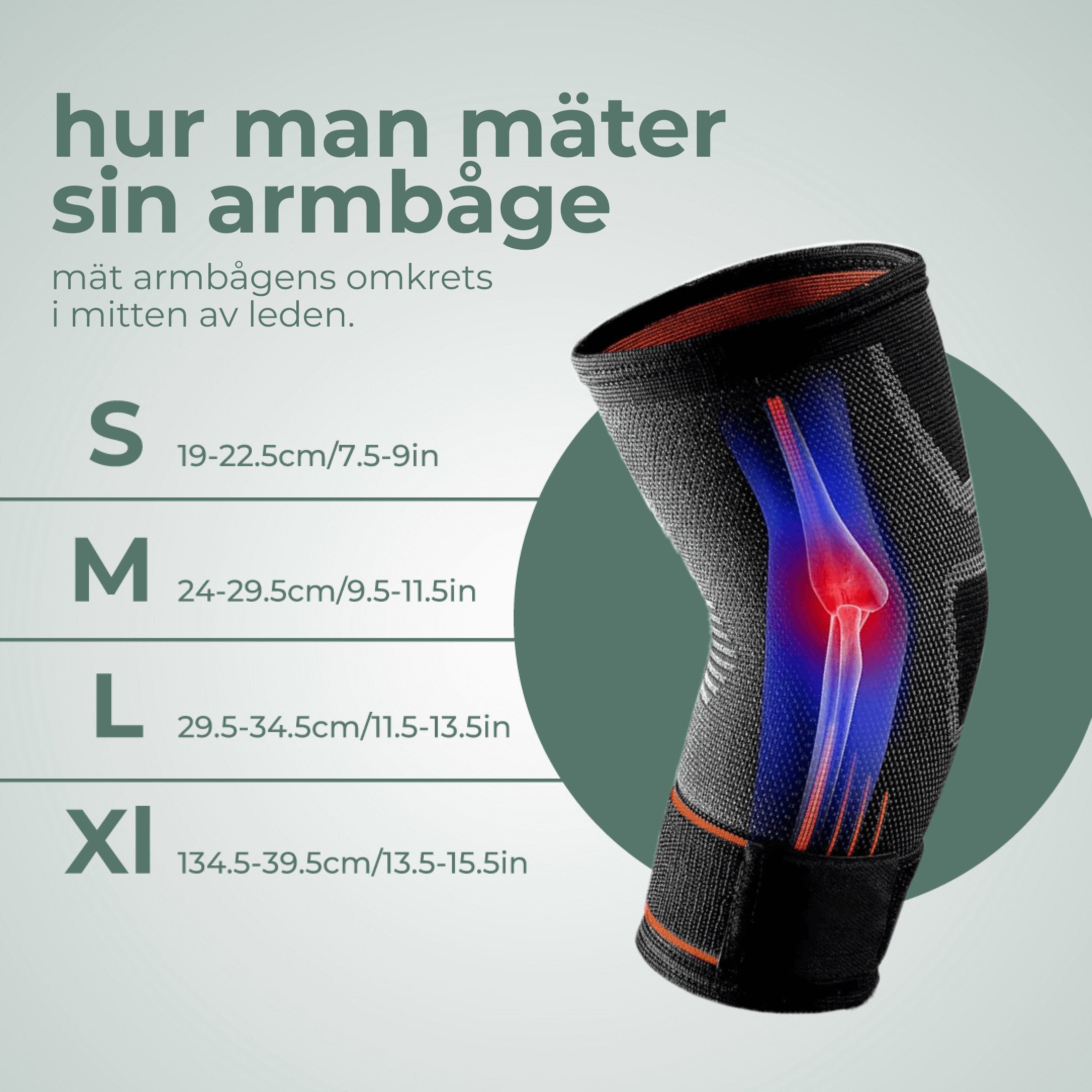Nerve Compression in the Elbow: Symptoms, Causes, and Treatment

Ulnar Nerve Compression at the Elbow, also known as Cubital Tunnel Syndrome, is a condition where the ulnar nerve becomes compressed or subjected to pressure at the elbow. This can lead to a variety of symptoms affecting the function of the elbow, forearm, and hand. In this article, we will go through the most common symptoms, causes, and treatment options for ulnar nerve compression at the elbow.
What Is Nerve Compression in the Elbow? Definition and Background
Nerve compression in the elbow occurs when a nerve is pinched, causing pain, numbness, and weakness in the forearm. The condition is often caused by overuse, injuries, or inflammation. Early treatment is crucial for alleviating discomfort.
This condition is commonly seen among adults, especially those who repeat the same movement or keep their elbow bent for extended periods. Nerve compression can occur on both the inside and outside of the elbow, where radial nerve compression affects the nerve on the outside of the elbow, while the more common type of nerve compression affects the ulnar nerve on the inside of the elbow.
Symptoms of Nerve Compression in the Elbow: What Our Patients Say?
Nerve compression in the elbow can manifest in several ways, and symptoms may vary in intensity and duration. Common symptoms include:
- Numbness and Tingling: This is often the first sign of nerve compression. The sensation is usually felt in the ring finger and little finger but can also extend up along the forearm.
- Pain in the Elbow: A dull or burning pain may be felt on the inside of the elbow, especially when the arm is bent for extended periods.
- Weakness in the Hand: You may experience difficulty gripping and holding objects, particularly with your two outermost fingers.
- Changes in Sensation: Decreased sensation or a feeling of "pins and needles" in the affected fingers is common.
- Muscle Atrophy: In long-term cases, muscles in the hand may begin to waste away, especially between the thumb and index finger.
- Increased Symptoms with Certain Positions: Symptoms may worsen when the elbow is bent, such as when sleeping or talking on the phone.
Patients with nerve compression inside their elbow often describe experiencing mild discomfort that worsens over time. Initially, it may be periodic discomfort that comes and goes, but without intervention, problems can become more constant and affect your ability to move your fingers properly.
Causes of Nerve Compression in the Elbow: Risk Factors and Situations
Several factors can contribute to developing nerve compression in the elbow:
- Repeated Bending of the Elbow: Prolonged or frequent bending of the elbow can irritate the nerve.
- Direct Pressure on the Elbow: Resting your elbow on hard surfaces for extended periods can cause nerve compression.
- Previous Injuries: Fractures or dislocations at the elbow may increase risk for nerve compression.
- Anatomical Variations: Some individuals have a naturally narrower canal through which their nerve passes, increasing risk for compression.
- Work-Related Factors: Certain professions that require repetitive elbow movements or exposure to vibrations may increase risk.
- Health Conditions: Conditions such as diabetes or rheumatoid arthritis can make nerves more sensitive to compression.
Nerve compressions can develop gradually over months or years. In some cases, a sudden injury or change in work routines may trigger or exacerbate existing issues. Doctors can often identify causes through careful examination and investigation of a patient's lifestyle and work conditions.
Diagnosis and Treatment of Nerve Compression in the Elbow: Get the Right Pain Management
To effectively treat nerve compression in the elbow, it is important to obtain an accurate diagnosis and choose the right treatment method:
| Behandlingsmetod | Beskrivning | Fördelar med Armbågsstöd |
|---|---|---|
| Vila och hållningskorrigering | Undvik aktiviteter som förvärrar symtomen | Armbågsstödet ger stöd och påminner om korrekt position |
| Fysioterapi | Övningar för att stärka och stretcha | Stödjer under övningar och främjar läkning |
| Nattligt stöd | Förhindra överböjning av armbågen under sömn | Armbågsstödet kan användas nattetid för optimal positionering |
| Antiinflammatoriska läkemedel | Minskar inflammation och smärta | Kan minska behovet av medicin genom naturligt stöd |

How Is Nerve Compression in the Elbow Treated? Rehabilitation and Support with the Elbow Support
The elbow support from Komforten offers several benefits for individuals suffering from nerve compression in the elbow:
- Provides support and relief to the affected elbow, which can reduce pressure on the ulnar nerve.
- Helps keep the elbow in an optimal position to reduce strain on the nerve.
- Can be used both day and night for continuous support and to prevent hyperflexion of the elbow.
- Supports rehabilitation exercises and can contribute to faster recovery.
- Prevents further injury by limiting extreme movements that may irritate the nerve.
For many patients, an elbow support may be sufficient to alleviate symptoms and prevent further deterioration. The support can be used as part of a treatment plan recommended by a doctor, especially during the first month after diagnosis when patients learn to adjust their activities to prevent compression.
Buy nowConclusion
Nerve compression in the elbow can be a painful and limiting condition, but with the right diagnosis and treatment, most individuals can experience significant improvements. By combining conservative treatment methods with the use of supportive aids like the Elbow Support from Komforten, many can effectively manage their symptoms and regain normal function in their elbow and hand. It is important to seek professional help early to prevent the condition from worsening and to initiate an effective treatment plan.
If you suspect that you are suffering from nerve compression in your elbow, feel free to contact healthcare for an assessment. The earlier you seek help, the better your chances are for successful treatment and a quick recovery.
Frequently Asked Questions (FAQ)
How long does it take to recover from nerve compression in the elbow?
Recovery time varies, but with the right treatment, many may experience improvement within a few weeks to months. More severe cases may require a longer treatment period.
Can I continue to work with nerve compression in the elbow?
It depends on your work and the severity of the symptoms. Many can continue to work with adjustments and the use of support such as the Elbow Support from Komforten.
How do I use the Elbow Support for best effect?
Use the support according to the instructions, especially during activities that strain the elbow and at night to prevent hyperextension.
Is surgery always necessary for nerve compression in the elbow?
No, most cases can be treated conservatively. Surgery is usually considered only if the symptoms are severe or do not improve with conservative treatment.
Can nerve compression in the elbow be prevented?
Yes, by avoiding prolonged bending of the elbow, taking regular breaks during repetitive work, and using supports like the Elbow Support from Komforten, the risk can be reduced.
